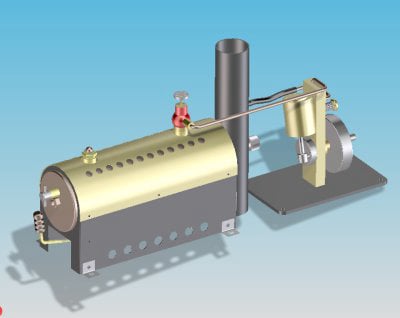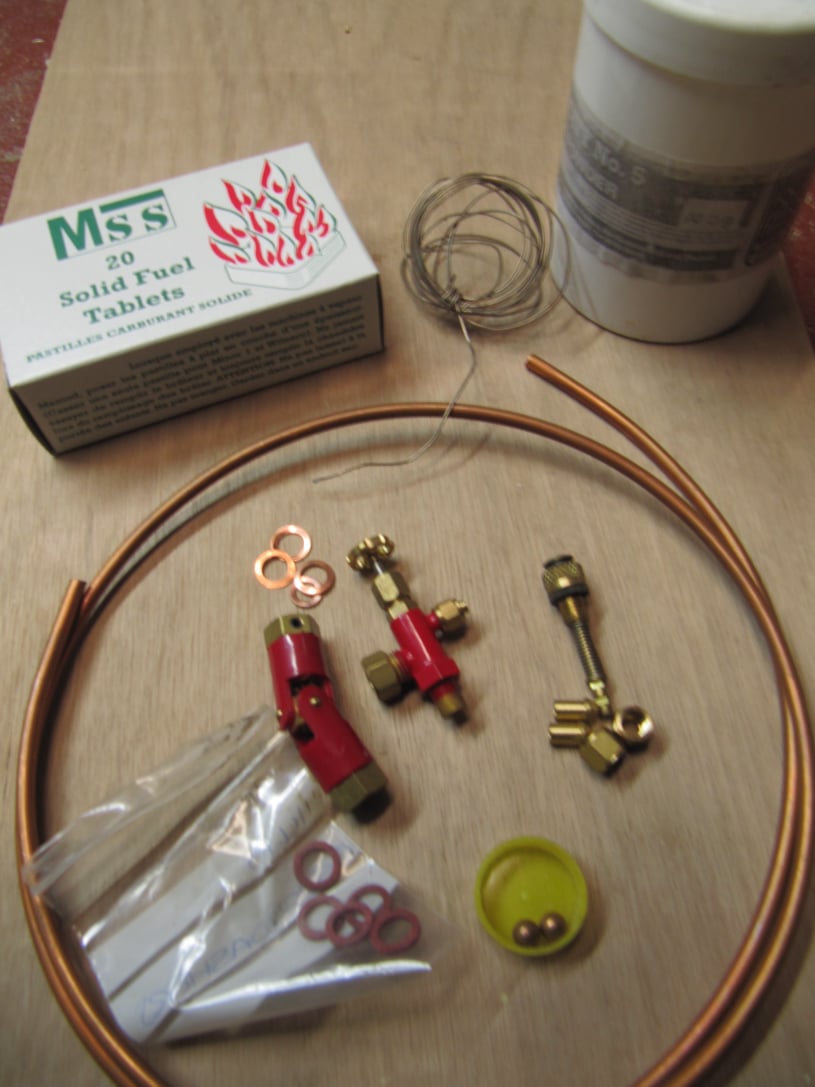Calculations
Some calculations were made on the proposed copper tube to see if it was suitable to be made into a pressure vessel and to ensure a safe design.
The formula used was P = (2T x s) / D
Where :
P = working pressure
T = Thickness of the copper tube (inches)
D = Internal diameter of tube (inches)
s = Maximum safe stress of copper **
Therefore : P = (2x0.047" x 2500) / 2" = 118 psi
So the 1.2mm thick, 50mm diameter copper tube could be used up to 118psi and still be within a tenth of the copper tensile strength. It is worth running this calculation on any proposed boiler material.
The engine was found to perform best on 20 - 40 psi, any more than this and the cylinder was lifted from the port face. So this copper tube would be more than strong enough for this pressure.
** Copper tensile strength taken as 25,000 pounds force.
** Chosen factor of safety = 10, so Copper strength reduced to 25,000 / 10 = 2,500 pounds.
It was planned to make the boiler end plates from the same thickness of copper, with a central stay through the middle, also made from copper. The stay diameter was calculated as follows.
Working pressure 40psi.
Copper tensile strength 25,000 pounds force.
Area supported by stay = Pi x R2 = Pi x 12 = 3.141 square inches.
Multiplied by boiler pressure = 3.141 x 40 = 125psi x factor of safety (10) = 1,250 pounds.
- So the stay would need to have a breaking stress of 1,250 pounds force.
This was divided by the tensile strength of copper to give the area required of the boiler stay to ensure adequate strength = 1,250 / 25,000 = 0.05 square inches.
So boiler stay radius would therefore be sqroot of (0.05 / Pi) = 0.126" or 3.2mm radius


